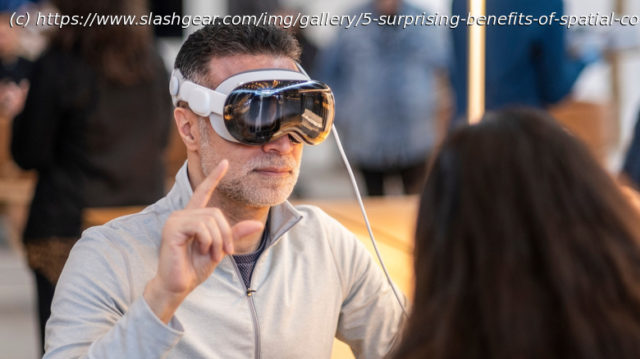Virtual and augmented reality tech has a checkered history, but modern advances in spatial computing have opened avenues to a vast array of applications.
When Google introduced Google Cardboard back in 2014, it seemed like Virtual Reality, or VR, was going to take off thanks to the democratization of technology. Unfortunately, it remained a party trick until VR gaming started gaining popularity. Several brands launched VR headsets, with Meta (then Oculus) leading the pack. Over the years, standalone VR headsets like the Meta Quest 3 have demonstrated the possibilities of modern VR tech. The world’s leading tech company has undertaken a foray into the mixed reality world with VR and Augmented Reality, or AR, through the Apple Vision Pro. While spatial computing via these mediums is now quite popular, most people seem to think that gaming or watching movies in an immersive environment are among the few uses of these headsets. The reality, though, is far from it.
Spatial computing has several use cases and benefits that may not be immediately apparent. These benefits involve the application of the technology in extremely important areas such as healthcare, education, and training. Students can receive a more realistic visualization of concepts with AR, while budding doctors can perform surgeries on virtual beings with the help of turn-by-turn instructions. Employees can collaborate from the comfort of their own homes in environments conducive to work. These examples are just the tip of the iceberg. Here are some surprising benefits of spatial computing that are sure to make you wonder if it is the future. Better collaboration
Working from home during the pandemic showed us all how coordinating with colleagues and members from different teams within your organization can be challenging. Staying at home may create a lethargic environment, directly impacting one’s productivity. This is what spatial computing aims to solve. It enables teams to work together in shared virtual spaces, regardless of geographical location and other physical barriers. Through AR and VR headsets, colleagues can interact with 3D models or projects, annotate documents, and brainstorm in real-time with the help of a virtual whiteboard or other elements typically found in a workplace. This mimics physical presence — something that more traditional solutions like video conferencing cannot replicate. For instance, architects and engineers can use platforms like Microsoft Mesh to explore a virtual building model — walking through its structure to identify design flaws or optimize layouts before construction begins. This saves both time and resources.
In creative industries, game developers can leverage tools to co-create intricate virtual worlds, manipulating assets in real-time to streamline workflows. Similarly, startups working on hardware products can view and make changes to their prototype’s 3D model, rather than building an actual product every time there’s a change. Spatial computing can also enhance cross-cultural teamwork by integrating real-time translation overlays for those who speak different languages. By providing intuitive tools and a sense of shared presence, spatial computing can certainly aid remote work, enabling seamless and efficient collaboration across multiple sectors.
Start
United States
USA — IT 5 Surprising Benefits Of Spatial Computing (No, It's Not Just Gaming VR...






